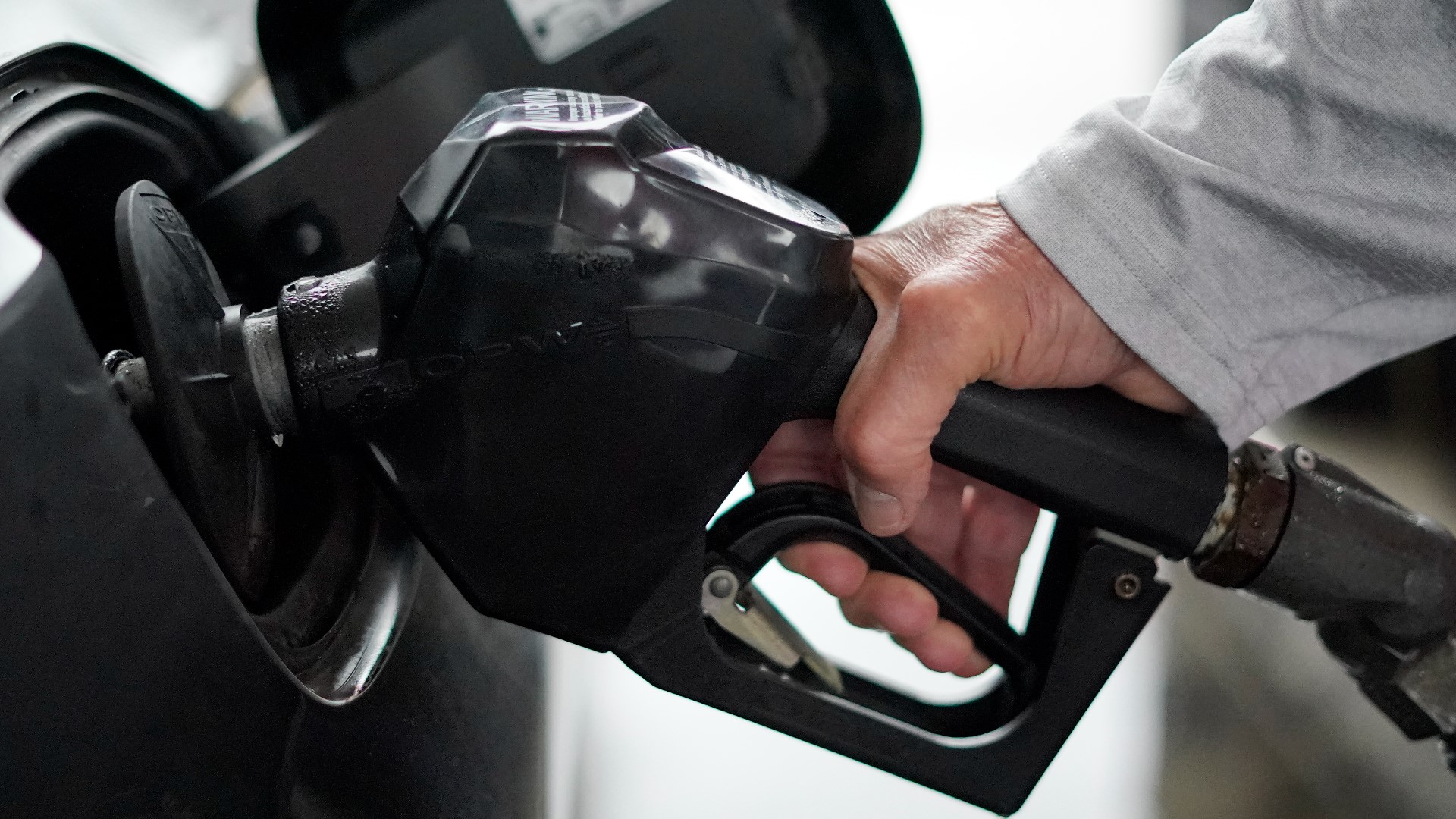DES MOINES, Iowa — EDITOR'S NOTE: The above video originally aired June 22
As July and its record-level fuel prices wind down, the road ahead still looks rough for truckers – and those they supply.
Things seem to be cooling down for most customers filling up the tank, but long-haul trips and larger tanks demand a little more prudence from truckers even now.
In the week of July 25, diesel prices in the Midwest averaged around $5.24 per gallon, a 1.98% increase from the same week a year ago. That's down from the peak average price of $5.78 in the week of June 20, the highest in recorded U.S. Energy Information Administration history.
For some in the industry, the ephemeral low prices pale in comparison to the consistent spikes they’ve dealt with for months.
“I looked up an example for one of our drivers that filled up in Newton, Iowa [on July 8],” said Eric Riley, the business manager at Crawford Trucking in Des Moines. “146 gallons cost us $788. Compared to a year ago, about 145 gallons, it only cost us $485. So that's a 62% increase from last year to this year.”
How do truckers handle spikes in gas prices?
For some trucking companies, the surge in gas prices is something that can eventually be handed off to those they deliver for.
“We have a regular line haul rate, which is what we agreed upon in contracts. The contracts are for months, years, many years ... And the fuel surcharge is our way of kind of agreeing that we're not really in business to make money or lose money based on the change in fuel,” said Dale Decker, the vice president of Decker Truck Line Inc. in Fort Dodge.
Eventually, the businesses, brokers and entities that truckers work with will bear the brunt of those financial woes. Unfortunately for consumers, that can cause the price of goods on the shelf to rise as businesses attempt to cover fuel surcharges.
“A lot of these rate increases are happening to the shipper now. That hasn't come down to the customer yet, so the supply chain cost of transportation is still trickling down to the consumer,” Decker added.
“To make money, we have to make sure that we're running enough trucks to be profitable from that standpoint. So essentially, we maximize our efforts in other areas to help with the added fuel costs. We may have to purchase less equipment this year,” Riley said.
For Decker, that means avoiding some areas of the country with the most expensive fuel prices, like California and New York.
“We're just kind of shying away from hauling into some areas now where fuel prices are just almost unrecoverable. That is, you're gonna hit so heavily with the cost of fuel that we're not even able to recoup it in a fuel surcharge,” he said.
Why is diesel more expensive?
Diesel fuel prices have been consistently higher for diesel than regular-grade gasoline since September 2004, according to EIA data.
There are many factors that can impact the price of certain fuels, including recent inflation levels and fears of recession. But the EIA lists a few major contributors:
- Demand for diesel fuel and other distillate fuel oils has been relatively high, especially in Europe, China, India and the United States.
- The transition to less polluting, lower-sulfur diesel fuels in the U.S. has changed diesel fuel production and distribution costs
- The federal excise tax for on-highway diesel fuel of 24.3 cents per gallon is 6 cents per gallon higher than the federal excise tax on gasoline
Semi-trucks hold an average of 125-300 gallons of fuel, which means that six-cent tax increase and higher average price adds up quickly at the pump. This is especially pertinent since semi-truck transportation is integral to shipping goods across the country.
"The only way consumers are going to get their products is if they're taken by truck across the U.S.," Riley said. "Because, I mean, you've got a certain segment of them are sent by railcar, but even if they're sent by railcar, they're still going to be picked up by a semi-tractor somewhere along the way."
Riley also said that dependence on trucking and inflexibility of gas prices forecasts trouble for consumers moving forward.
What’s on the horizon?
For both truckers and consumers, the high prices are non-negotiable.
Gasoline – both regular-grade and diesel – is considered a necessity good, which means that no matter how high prices get, people will buy it because they need it to do everyday tasks.
But prices are dropping, albeit slowly.
In Iowa, the average price of regular-grade gas is $3.96 and diesel is $4.98 as of July 28, according to AAA.
That's more than a 7% drop since last month for both types, but regular-grade and diesel still ring in far over average July 2021 prices.
Diesel is still 58% more than it was last year, and regular gasoline notes a 32% comparative increase.
For Riley, this means just weathering it out, staying frugal and waiting for those prices to even out again. He recommended consumers do the same.
"We just have to ride it out in the storm until it finally settles down, if it settles down," he said.

